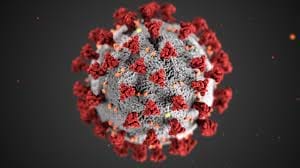by Jason Tarnow | Feb 24, 2022 | Crime, Media, Police
A Vancouver man suffering from long haul COVID-19 symptoms was successful in the judicial review of his 90-day Immediate Roadside Prohibition (“IRP”) after arguing that the Adjudicator breached his right to procedural fairness in his original review to RoadSafety BC.
On February 11, 2021, Peter Ronald Gibson was issued an IRP after the police officer alleged he refused to provide a sample. Mr. Gibson made 7 attempts into the Approved Screening Device, none of which successfully yielded a suitable sample. As a result, his vehicle was impounded for 30 days, and he was prohibited from driving for 90 days.
Mr. Gibson sought a review of his IRP to RoadSafety BC, delegate of the Superintendent of Motor Vehicles on the basis that he had a reasonable excuse for failing to provide a breath sample. In Mr. Gibson’s original review, he provided evidence in the form of his Affidavit. He also provided a letter from his physician that confirmed his diagnosis – he was suffering from long term symptoms as a result of COVID-19, including shortness of breath on exertion.
The letter reads:
“His physical examination shows evidence of post-viral reactive airways with sever forced expiratory wheeze. He has been given prescriptions for Flovent and Salbutamol inhalers today. This could contribute to his difficulty performing breathalyzer test during recent traffic stop”
The Adjudicator at RoadSafety BC rejected the letter from Mr. Gibson’s physician, stating that there was no evidence that the physician was aware of the “minimum flow rate (of breath)” required to provide a sample. Mr. Gibson also provided his own Affidavit, which confirmed that he had been referred for treatment, which included CT scans and chest x-rays, among other diagnostic tests.

Keep in mind that the role of the Adjudicator is to analyze whether Mr. Gibson had a reasonable excuse for failing to provide a sample. The analysis is done through review of the Report to Superintendent and all included materials, and also through review of all materials provided by the Applicant (in this case, Mr. Gibson). The Adjudicator may also rely on the Operator’s manual for the Alco-Sensor FST (the Approved Screening Device), which includes information such as proper operating temperature of the device, screen codes, and procedural standards.
Ultimately, the Adjudicator determined that Mr. Gibson’s version of events lacked credibility, and that his physician did not provide sufficient evidence that his medical condition would have prevented him from providing a suitable sample into the Alco-Sensor FST. In doing so, they advanced their interpretation of the testing requirements within the Operator’s manual – specifically, the wording used to describe the necessary airflow required to provide a sample:
“The Alco-Sensor FST has an automatic sampling system designed to ensure that a sample of deep lung air is obtained and analyzed. In order to trigger automatic sampling the subject must blow with a minimum flow rate, must produce a minimum breath volume, and blow for a minimum duration…”
On judicial review, Supreme Court Justice Tammen took issue with the Adjudicator’s interpretation of this issue. The Judge dissected the Adjudicator’s analysis and concluded that despite quoting the appropriate resource, the manual itself provided no information to estimate the “minimum” flow rate required.
Through the Adjudicator’s analysis, Justice Tammen determined that they had relied on information (relating to the required flow rate of a sample) that was not available to the Petitioner (or his physician) at the outset of his review with RoadSafety BC. This breached the Petitioner’s right to procedural fairness.
Justice Tammen directed that the Adjudicator’s decision confirming the IRP of the Petitioner be set aside, and that the matter be remitted to RoadSafety BC for a new hearing.
This case demonstrates a significant flaw in the IRP regime – that is, a blurring of the lines between adjudication and medical expertise. While adjudicators may have specialized knowledge of certain issues due to continued exposure via their employment, the boundaries in their role must be respected and enforced.

If you have received an Immediate Roadside Prohibition, an Administrative Driving Prohibition, or have been charged with Impaired Operation of a Conveyance, contact an experienced criminal lawyer at Tarnow Criminal Law as soon as possible. Our office is located in the heart of Richmond, only 20 minutes from downtown Vancouver on the Canada Line, and within 10 minutes of Vancouver International Airport (“YVR”).
Our firm is also licensed to work in the Yukon Territory, where the 90-day review process for impaired driving is an entirely different process. If you are facing impaired driving charges in the Yukon, contact our office as soon as possible for a consultation.
by Jason Tarnow | May 20, 2020 | Crime, Criminal Attorney, Legal Aid, Legal Rights, Media, Police, Social Media, Wheels Of Justice
It goes without saying that the judicial system has been hit hard by COVID-19. This isn’t wildly surprising – there was no solid emergency response strategy in place for a situation like this, and as a result, a significant amount of time and resources have been expended to create a sense of control amongst the chaos.
It was acknowledged early on that certain individuals in the justice system would be disproportionately effected – accused persons in custody awaiting trial or sentencing, residents of remote communities that operate under a court circuit, and, of course, the victims in cases where there is uncertainty of if or when the case proceeds at all.
Since the World Health Organization declared a pandemic in response to COVID-19, law enforcement has tried to adapt where required. One of the most profound changes relates to the processing of newly accused individuals – and it may provide context into why intimate partner violence has surged during the pandemic. Between April 6 and May 6, 2020, 8 tragic incidents of domestic violence against women across Canada resulted in fatalities. There is, of course, no doubt about the fact that violence in relationships occurred before COVID-19, and will continue long after the pandemic is declared over – but there are aspects to a surge in intimate partner violence that are directly linked to the virus and to the policies that have been implemented when trying to process, manage, and supervise offenders.
Hundreds of accused persons awaiting trial in custody have been released, with chargeable offences ranging from assault, fraud, drug trafficking and beyond. Again, not surprising – as we’ve discussed previously on the blog, the correctional system serves as the perfect breeding ground for the virus, and it would be beyond cruel and unusual to take no action at all to protect those that are considered to be among the most vulnerable.
It’s the way that law enforcement has chosen to operate on a “catch and release” scheme in cases that would, under normal circumstances, require a bail hearing – and probably a highly contested one at that – that has likely contributed to domestic violence rates during COVID-19. Due to concerns about the nature of the virus and its ability to spread quickly, bail hearings have occurred less frequently, even with video-conferencing and telephone conferencing put into effect to streamline the process and protect the health of all parties involved. Instead of a bail hearing, an accused is more likely to be released on an Undertaking. The Undertaking may require that the accused check in with a bail supervisor weekly – something that is generally done on an in-person basis, where the most value lies in a face-to-face meeting – by telephone instead.

Aside from that, the “stay at home” order has, unintentionally, resulted in many victims of violence becoming prisoners in their homes. Public services like shelters and safe houses are stretched beyond capacity, and for some (especially people with underlying health conditions and people with children) entering into such an environment during a virus pandemic might seem even less tolerable than continuing to cohabitate with their abuser.
As with the other aspects of our lives – returning to work and school, chatting with our neighbors, planning vacations – the judicial system will, in one way or another, return to full operational capacity. But for those who have suffered the effects of intimate partner violence during the pandemic, there may be no return to the way things once were.
by Jason Tarnow | May 5, 2020 | Crime, Legal Rights, Media, Police, Social Media, Wheels Of Justice
On April 18 and 19 2020, Gabriel Wortman was solely responsible for the largest mass shooting in Canadian history, which claimed the lives of 22 innocent people including veteran RCMP Cst. Heidi Stevenson. Wortman, a 51 year old denturist, went on a rampage in Portapique, Nova Scotia using firearms that police suspect were obtained illegally, likely from the United States. Eventually he was cornered at a gas station and died in a shootout with police.
Just shy of two weeks later, Prime Minister Justin Trudeau announced a ban on approximately 1,500 different models of military grade assault-style weapons. The announcement came as a surprise to no one – back in 2015, the Liberal government campaigned on promises to address gun violence. In addition to banning assault-style weapons, the Liberal government vowed to implement a buy-back program for prohibited firearms, establish red-flag legislation, impose tighter restrictions for proper storage of firearms and licensing, and to grant municipalities the power to ban handguns.
Trudeau’s announcement has sparked outrage among gun owners and enthusiasts, although overall most Canadians are in favour of stricter regulations regarding firearm ownership.

It’s important to understand what the ban actually applies to. It prohibits the sale, transport, import and use of semi-automatic weapons – Ruger Mini-14, M14 semi-automatic, Beretta CX4 Storm, and CSA-VZ-58 to name a few. Fully automatic weapons are already banned in Canada. Semi-automatic firearms were previously classified as either restricted or non-restricted, and will now be classified as prohibited.
So what do you do if you already have these in your possession? That depends.
Due to their classification as prohibited weapons, effected firearms will essentially become useless. In any event, gun owners will not be forced to relinquish them – but they will be provided with an incentive to do so. Though unclear at this point, the Canadian Government will be implementing a “buy back” program for all applicable firearms – aka, you’ll be paid to turn them over. For gun owners wishing to retain their firearms, there will be an option to be “grandfathered” into ownership. Certain terms and restrictions will apply, and will likely turn these weapons into collector’s items.
Unlike in the United States, our Charter does not include a constitutional right to bear arms

For those who choose to do nothing and simply retain their weapons, the consequences could be severe. Being found in possession of a prohibited firearm comes with the potential of spending years behind bars and a criminal record that could negatively impact employment and traveling prospects for life. The Canadian Government has instituted an amnesty period (waiting period) to allow for gun owners to consider their options. In any event, all gun owners must be in compliance, one way or another, by April 2022.
Though there is definitely a tight-knit community of lawful and responsible gun owners in Canada, the point of the ban is to limit access of tactical weapons among Canadians. Unlike in the United States, our Charter does not include a constitutional right to bear arms – so you can be sure that tighter regulations are on the horizon.





